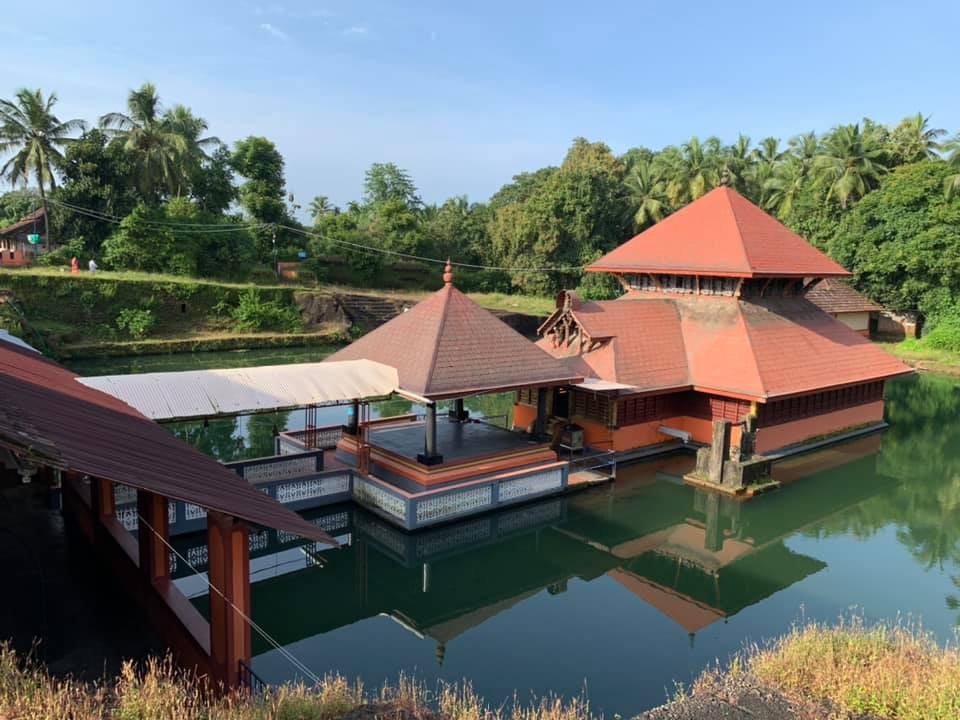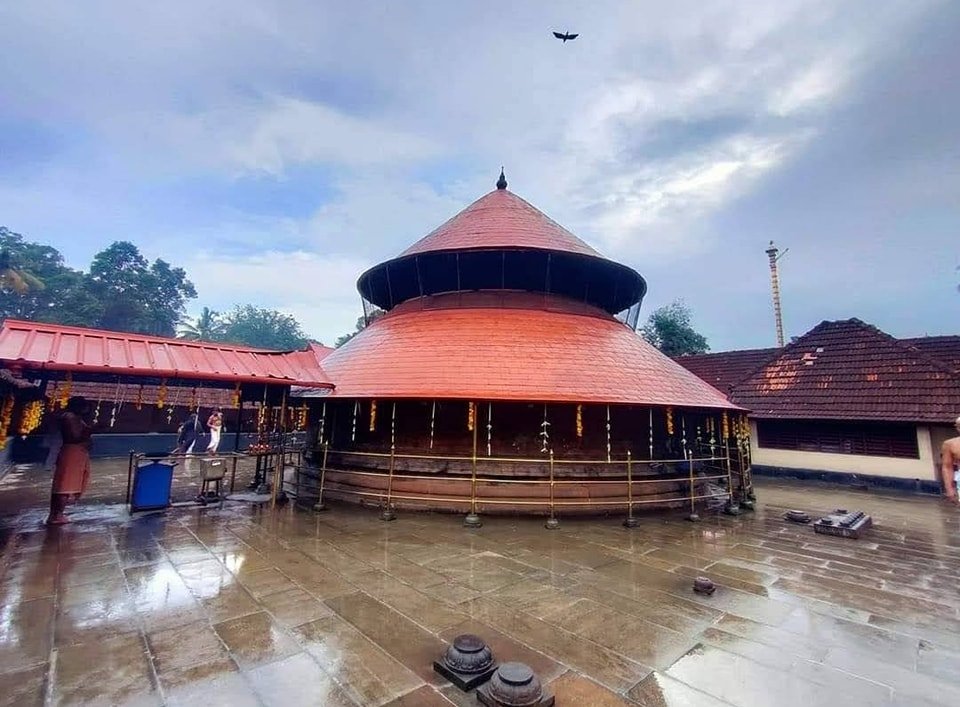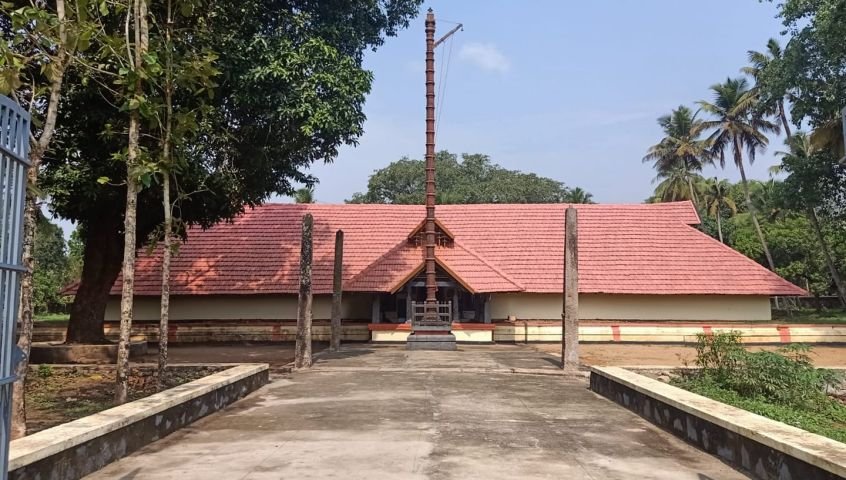Kerala is known for its rich cultural and religious heritage, and numerous temples are dedicated to Lord Vishnu, including those featuring the Mahavishnu deity. One such well-known vishnu temple in kerala is the Padmanabhaswamy temple, Trivandrum, dedicated to Lord Krishna, believed by many to be an incarnation of Lord Vishnu. Some of the popular vishnu temple in kerala are given below.
1.Ananthapura lake temple – Vishnu temple in kerala

Ananthapura Lake Temple or Ananthapuram Ananthapadmanabhaswamy Temple is the only lake maha vishnu temple in Kerala. This temple is located near Kumbala in Puthigai Panchayat of Kasargod district. Although it is called a lake temple,but this temple is located in the middle of a pond.
The main diety here is Ananthapadmanabhaswamy. It is believed to be the original location of Thiruvananthapuram Padmanabhaswamy Temple. Padmanabhaswamy’s darshan sitting on top of Adisesha is facing east. Goddess Bhumi is sitting on Padmanabha’s left and Mahalakshmi is on his right.
Built in a unique architecture, this Ananthapura Lake Temple idol is built in the ancient style of idols called “Katusharkarapra yoga. The special day here is the Tepotsavam of Medam 5. Since the temple is in the pond, the ezhunnallip is done in a boat. 3 pujas are performed in this temple every day. Ganapati, Jaladurga, Parthasarathy and Vanashasta are the sub deities.
The main attraction of this place is the crocodile ‘Babiya’. The temple priests testified that the harmless ‘Babiya’ used to eat only the offerings in the temple. The British shot and killed the crocodile that was found in this lake since ancient times, but later this ‘Babiya’ appeared on its own. The old Babiya passed away in 2022.
2.Thrikodithanam mahavishnu temple

This temple is located 2 km away from Changanassery in Kottayam district at a place called Trikkodithanam. The main deity is Lord Vishnu. This Trikkodithanam Mahavishnu temple is one of the Vaishnavathirupathis.
This temple faces east and has a round sanctum. It has Dakshinamurthy facing south and Narasimhamurthy facing west. Ganapati and Bhadrakali as deities , Shastav, Subramanian and Rakshass are also there.
Five pujas are held in this temple.The festival is held for 10 days after Tiruvonam in the month of Scorpio. The fiftieth day is Kartikadeepam. This Kartika lamp is a very old custom.It is doubtful whether this was the Kartika lamp in the month of Kartika.
In the stone inscription of King Kulasekhara Bhaskaravarman in the temple, it is stipulated that ghee for the Kartika lamp in the month of Scorpio should be provided before Sankaranti and in case of default, the king should be fined. There is a belief that Kuntidevi sacrificed her body in the eastern corner of this temple. Some believe that the lamp is related to this.
3.Thrichittat mahavishnu temple

Thtichittat Mahavishnu Temple is believed to be one of the 108 Vaishnava Tiruppathy’s. This temple is located in Chengannur in Alappuzha district. The main idol here is Lord Vishnu. This temple is also known as “Thiruchengannur”.
It is believed that this temple was built by “Dharmaputra”, the eldest of the Panchapandavas of the Mahabharata. The main special festival of this place is celebrated by hoisting the flag on the day of Atham in the month of Pisces and performing Aaratu on the day of Thiruvonam.
Apart from this, Ganapati, Shrikrishnan and Shastav are also sub-deities in this temple. Thtichittat Mahavishnu Temple belonged to “Vanjipuzha Madom” in the early days. The temple pond here is known as “Shankhatheertha”.
4Janardanaswamy temple varkala | well known Vishnu temple in kerala

Janardhana Swamy Temple is located on top of a hill near the Arabian Sea in the town of Varkala in Thiruvananthapuram district. The main idol here is Lord Vishnu.
The Chaturbahu idol is seated on a lotus pedestal. The idol is about 6 feet tall including this pedestal. A typical Chaturbahu Maha Vishnu idol has a conch, a wheel and a mace, Padmam (lotus), can be seen wearing all of these. But the idol in Janardhanaswamy temple is different from that.
In this idol, instead of a lotus, you can see a Kumbh filled with Tirtha in the hand. Goddess Lakshmi and Goddess Bhumi Devi can be seen with the Lord Vishnu idol. This idol facing east is believed to have been taken from the southern seashore. It is believed that the hand of this idol with Nirakumbha rises up day by day and if it reaches the mouth, the Kali Yuga will end.
The sanctum sanctorum of this temple known as Dakshinakashi is circular in shape. Apart from Lord Vishnu, Shiva, Ganapati, Shasta, Hanuman, Chandikesha, Naga deities and Ananthakrishnan (naga) also reside here as sub-deities. There are 4 pujas per day here and Melshanti is required to be From another land.
Aaratu comes on the answer day of the month of Pisces with ten days of ulsava festival. Sacrifice is very famous on the shore of Pitru Darpanam here
5.Padmanabhaswamy temple

Sri padmanabhaswamy Temple, in Thiruvananthapuram city, Kerala’s capital, is a renowned temple dedicated to MahaVishnu. The primary deity is Lord Vishnu, depicted reclining with Goddess Lakshmi outside the naga known as Ananthan (Adhisha). Along with Padmanabhaswamy, Ugramurthy in the south, Narasimhamurthy, and Thiruvampadi Srikrishna Swamy are revered equally.
Padmanabhaswamy temple’s main gopuram, constructed in the Dravidian architectural style, faces the eastern fort gate of the Kotamatil that encloses the temple. Considered one of Thiruvananthapuram city’s notable landmarks, this main gopuram stands out.
The sacred temple, one of 108 divine lands, stands majestically, facing the east. Its grand gopuram, built in the traditional Dravidian style, dominates the eastern side, while the other gopurams are crafted in the distinctive Kerala style. The serene Padmathirtha pool lies to the northeast, adding to the peaceful ambience.
Padmanabhaswamy temple boasts an impressive collection of sculptures and murals, including the magnificent Ananthasayana mural, which graces the back wall of the sanctum and is considered one of the largest in India. Although the temple features two tall flagpoles, it does not have an altar.
The shrine’s rectangular shape is ideal for its purpose, which is to accommodate countless worshippers. At the heart of the sanctum sanctorum, an impressive eighteen-foot-long Bhagavadvigraha made from Katusharkara yoga and 12008 Salagrams stands majestically, facing east. Bhumi Devi and Lakshmi Devi flank the shrine on either side
.
Padmanabhaswamy temple’s eastern tower, crafted from Krishna stone, rises to approximately 100 feet, showcasing seven kilipavatils and seven golden water pots at its summit, taking inspiration from the Thanjavur model. The remaining towers are designed in the traditional Kerala style, featuring two levels.
Lord Vishnu is seated in a state of yogic sleep above Ananta, serving as the deity in this temple. The idol of Padmanabhaswamy stands at a towering height of eighteen feet. It is made from a particular material called Katusharkara Yoga Kootu, which dissolves when anointed. Therefore, another idol of Lord Vishnu has been installed here. The ritual of Abhishekam is performed on this idol. Only three parts of Lord Vishnu’s Sri Bhagavat form can be viewed. His right hand is adorned with the chin mudra and hangs near Anantathalpa. Below it lies the Shiva Linga.
The constant worship of Lord Shri Mahadev is emphasized. Ananta’s blade covers the head of the deity. The lotus emerging from Sri Padmanabha’s navel reveals the four-faced form of Brahma. One notable aspect of this temple is the presence of the trinity, Brahma, Vishnu, and Shiva, in the same sanctum. Additionally, intricate figures of the Rishivaryas are engraved on the stones behind them. Lakshmi Bhagwati is opposite the Lord’schest, while Bhumi Devi is a short distance away.
Thiruvananthapuram, also known as the abode of the LordLord who resides above Ananta, is home to the celebrated Painkuni Utsavam festival. This 10-day extravaganza is marked by the Maharaja hoisting the flag on the auspicious day of Rohin Nakshatra at Sundaravilasam Palace, followed by the Palliveta and culminating in the Aarat on the shore of Shankhumukham on the day of Atham Nakshatra. The festival is initiated upon the royal family’s command, and the temple is situated within the fort at the heart of Thiruvananthapuram city.
6.Thirunelli temple

Thirunelli temple is a well-known Hindu temple in Kerala’s Wayanad district. This temple is well-known for the sacrifices made for the souls of the deceased.
Thirunelli temple , also known as Sahyamalakshetra, is located in the Brahmagiri hills, bordering Karnataka and is surrounded by the mountains Kambamala, Karimala, and Varadiga. Amalaka temple is another name for this temple. Lord Vishnu is the temple’s main deity. of this thirunelli temple.
A Shivalinga deity with the presence of Lord Shiva can be found in a cave near the temple. Thirunelli temple is an architectural marvel supported by 30 granite pillars. Puthari, Chuthuvilak, Navratri, Shivaratri, Karkatakam, Libra, and Kumbham are important temple days.
The temple’s main festival is held in the month of Meda for the equinox. “Dakshina Gaya” is another name for this temple.
There are numerous legends surrounding the origins of this Thirunelli temple . According to legend, Brahma built this temple and dedicated it to Lord Vishnu, and it was built in the shape of quadrilaterals. This is also why the mountains surrounding the temple are known as Brahmagiri. Three Malayalee Namboothiri on a pilgrimage to Mysore got lost, hungry, and wandered here when they discovered an ancient temple standing in the forest.
They were cured when they saw a gooseberry tree nearby full of gooseberries. It is said that there is an asiriri and the presence of the Trinity in this location; it was advised that it should be named “Thirunelli” and that no further pilgrimages should be made to other sites. According to another legend, this is why they called the place Tirunelveli. The forests surrounding this temple are densely forested with paddy trees. Lakshminarayana is said to be present in them.
